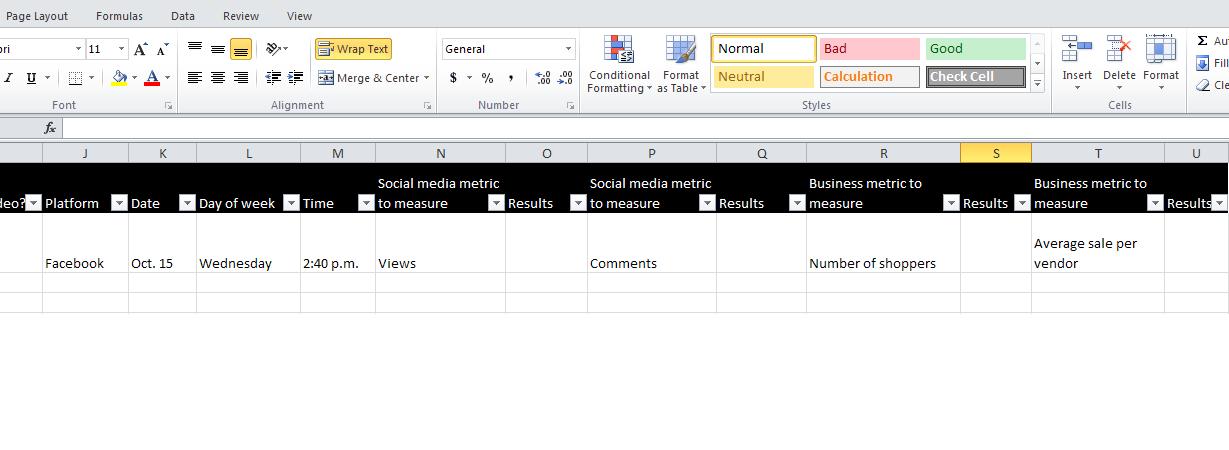When someone asks me how they get can more Twitter followers, it’s hard for me to give a straight answer.
Not that I don’t know how to get more followers — there’s research showing, for example, that acting as a source of information instead of just talking about yourself will grow your audience. Hashtags help, as do including URLs and @mentions of sources.
But I think focusing only on building followers and Facebook likes, for example, misses the point.
I’m the queen of analogies, so imagine you’re opening a new restaurant. You’ve poured your life’s savings into it and cajoled your friends and family into investing in your dream, too. What do you care about most at the end of every night? Is it how many people walked past your front door and looked at your menu? Or is it how much money is in the cash register?
When you’re choosing a location for that new restaurant, you probably consider traffic counts. I’d compare your number of Facebook likes to how many cars drive by or how many people walk past your location. You have the potential to engage them in a conversation and win their business, but you haven’t yet.
In last week’s post, I offered five questions to inform your social media strategy:
- What are your company’s goals?
- What’s your communications status quo?
- Who is your audience?
- What is your competition doing with social media?
- What marketing resources do you have?
To build on that and put into practice a plan that doesn’t stop at the number of people walking past your restaurant but actually how many meals you served and how much money you made:
- What does your audience care about? Whether your current and potential customers are “high-income foodies” or “recent college graduates” or “busy moms,” what do you think interests them? If you’re trying to reach both the business owner who is the ultimate decision maker and the administrative assistant who acts as the owner’s gatekeeper, for example, you might need to win both over, but they’ll each have different needs. Consider what each group of your customers and potential customers are interested in.
- What do you have to offer that fits those interests? Do you create your own content that’s a resource? Can you share your knowledge or the knowledge of your staff? Or how about pointing out to articles and blog posts by others so you provide useful or entertaining content?
- Where does your audience spend its time? Are you more likely to reach your customers on LinkedIn or YouTube? Instagram or Pinterest? Reddit? Ning? Unless you have unlimited time and resources, you will likely want to focus your energy on the places where you’re most likely to connect with your current and potential customers. If you don’t know, ask some of your best customers what they use and check out where your competitors are.
- What do you want your audience to do? What’s the very next step that will deepen your relationship with them? Do you want them to visit your website, sign up for your e-newsletter, donate to your nonprofit? Think about a clear call to action like “come to our open house Monday,” and look for ways you might either connect your call to action to sharing content your audience cares about or ways to mix your call to action in between the other content you share.
- How will you measure success? This is where it all comes together, the magic moment of determining your actual return on investment. Perhaps the most straight forward method is to make a list of easily measurable business metrics, such as weekly number of sales and weekly total revenue, and watch to see if they go up or down. Drawing a direct cause and effect relationship can be difficult, because social media is less about clobbering people with your marketing message and more about building a relationship and a conversation, but you can still watch the needle to see if you’re making more sales or bigger sales.
I think focusing on providing value to your current and potential customers, while measuring how successful you are in moving them toward buying, is so much more important than fixating on your number of Twitter followers.
Would you rather have 2,000 Twitter followers who love your business, who actively engage with you and who share your content with their friends OR 100,000 followers who will never buy from you and who don’t pay attention to anything you say?



5 Comments
Make $50 Per Day Method Free
Definitely imagine that which you said. Your favorite justification seemed to be at the web the easiest factor to take into account of. I say to you, I definitely get irked while other folks think about issues that they plainly don’t realize about. You controlled to hit the nail upon the highest as well as outlined out the entire thing with no need side effect , other folks could take a signal. Will likely be again to get more. Thanks
custom url shorteners
I seriously love your website.. Very nice colors & theme.
Did you develop this web site yourself? Please reply back as I’m looking to create my own site and want to find out where you got this from or just what the theme is called. Kudos!
Leave a reply